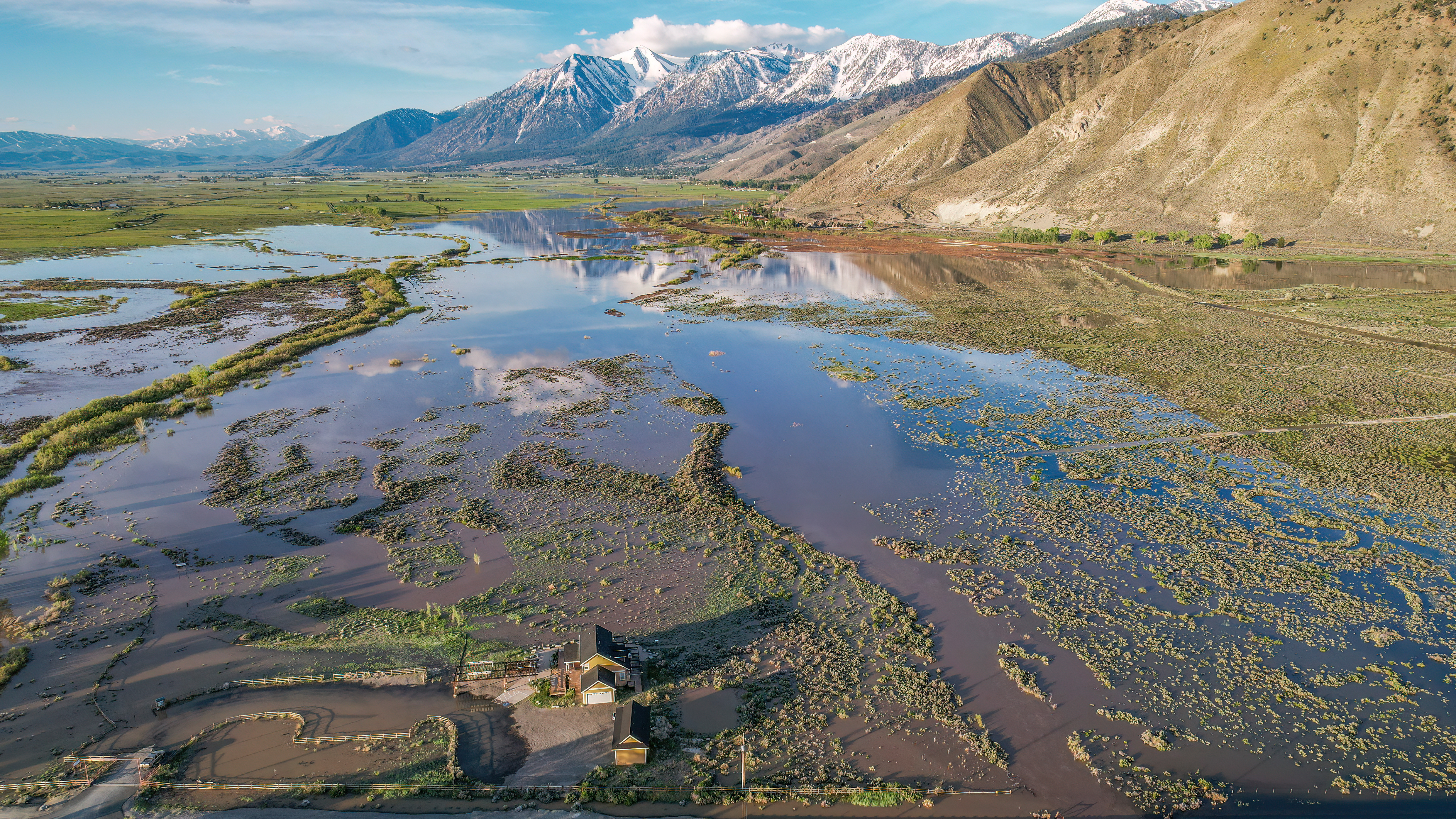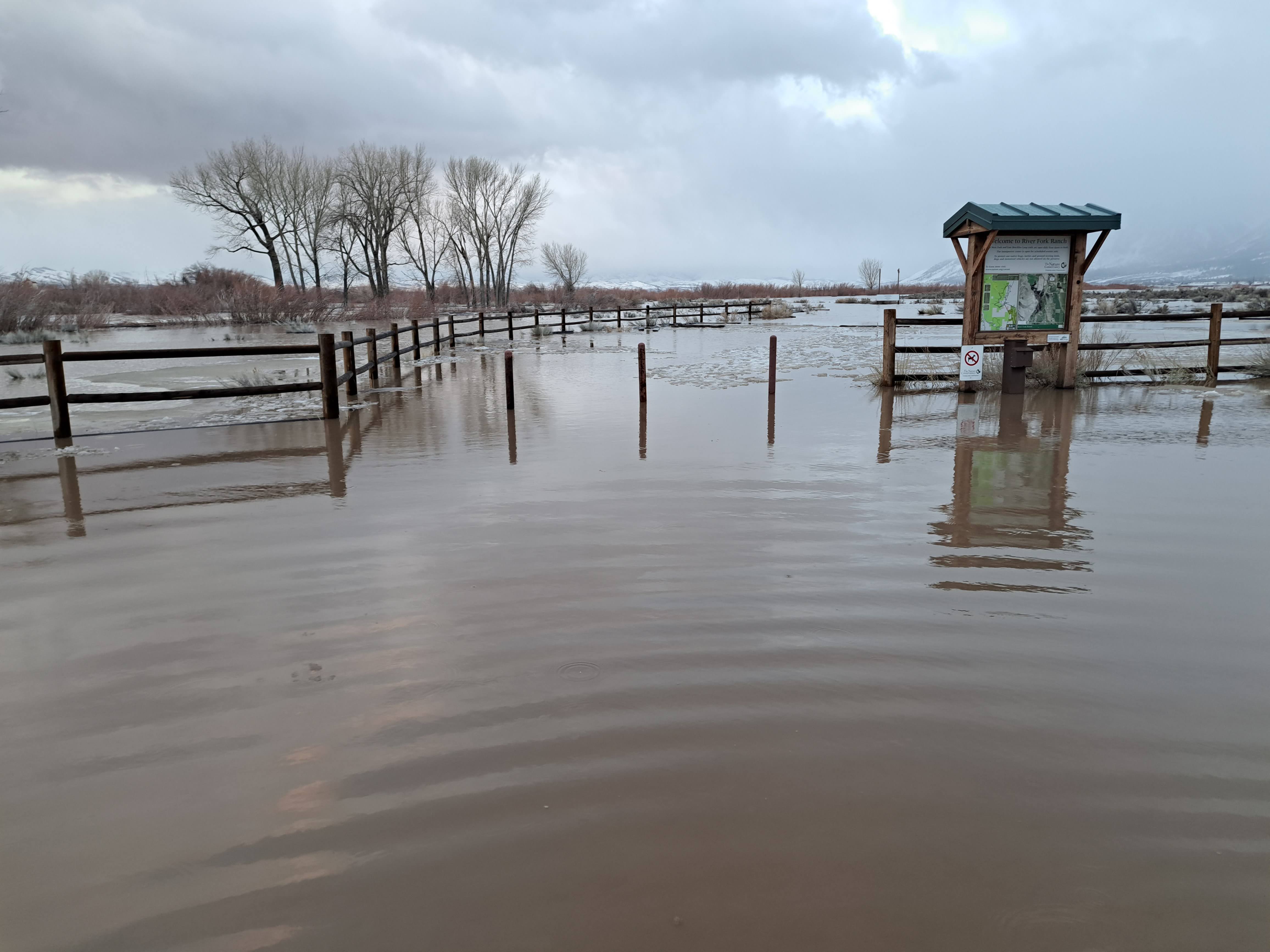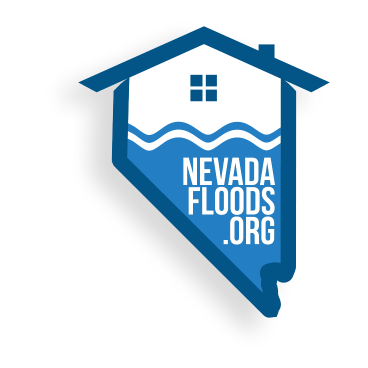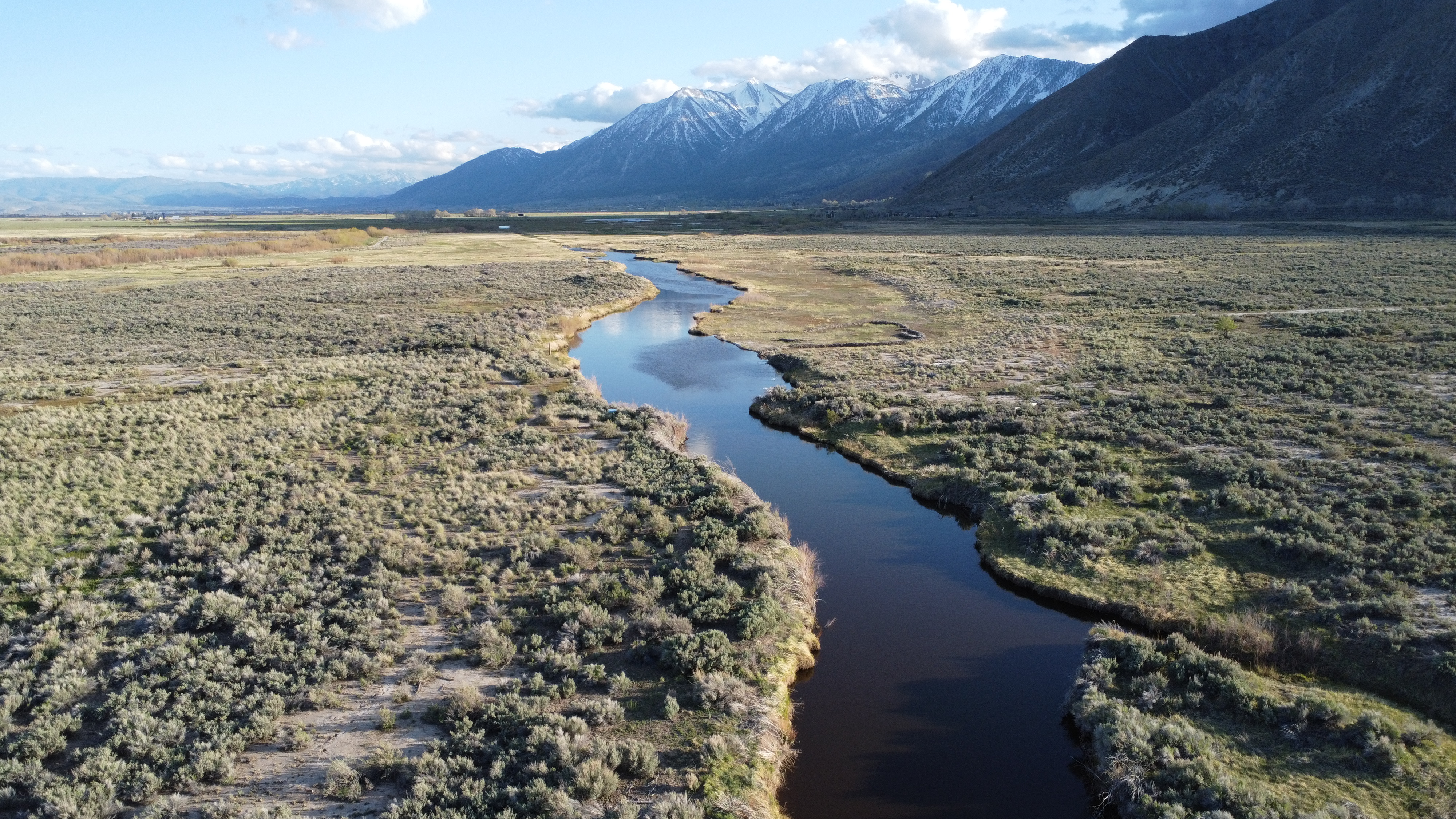River Fork Ranch High Water Mark
Preserving the Floodplain

Shallow flooding surrounds River Fork Ranch in Genoa, Nevada in Spring, 2023 (left). Photo taken from drone looking south along the Carson River (right).
As part of the (Nevada Silver Jackets) Nevada Comprehensive High Water Mark Campaign, a series of interpretive High Water Mark signs were developed to educate the public and raise flood awareness across Nevada. The High Water Mark sign for River Fork Ranch Preserve shows a Spring 2023 photo of River Fork Ranch flooded. The sign explains how undeveloped floodplains reduce flood risk to communities downstream by giving rivers room to swell beyond their banks in times of high flow, while also allowing groundwater aquifers to recharge.
To put into perspective the volume of water that the protected floodplain within River Fork Ranch preserve can hold, let's imagine a flood across the entire property that is 1 inch deep.
1 acre is equal to 43,560 square feet.
1 inch of water across an acre is equivalent to 3,630 cubic feet of water or 27,152 gallons (~7.5 gallons per cubic foot).
1 inch of water across 800 acres would be equivalent to 21,721,600 gallons of water.
That is 21 million gallons of water that would be allowed to go back to the water table and not contribute to downstream flooding.


While the flooding seen at River Fork Ranch is shallow, this type of flooding is common to Nevada. Did you know that an inch of standing water can cause $25,000 worth of damage?
River Fork Ranch was purchased by The Nature Conservancy in 2000 to protect this stretch of Carson Valley floodplain and it's ecosystems. The 800-acre stretch provides idyllic recreational opportunities with hiking trails and gorgeous mountain views. To learn more about River Fork Ranch visit their website.
River Fork Ranch resources and video content:
Drone footage of flooding at the River Fork Ranch
Carson River Floodplain is Worth Conserving
Agriculture is a Good Fit for Floodplains - video by the Carson Water SubConservancy District
Agriculture is a Good Fit for Floodplains - publication by University of Reno Extension

